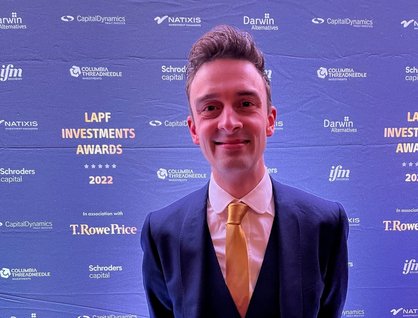Investors into the market
For the first time this year we have estimated the composition of the social impact investment market, to better understand investor appetite for social impact alongside sustainable returns. This new data shows the different types of investors that are active in the market and the different areas they are investing in.
-
21%
Pension Funds
14%
Endowments & Charities
13%
Asset/ Wealth Managers
9%
High Net Worth Individuals (HNWI) & Family Offices:
This content is not visible because you have denied third-party cookies. Update your cookie settings and refresh the page to interact with this element.
Who are the investors?
The investors or capital owners are organisations that provide the capital to be invested via an intermediary. We're including data on the types of investors allocating to impact funds across the four areas where we see real opportunity for growth in social impact investment.

Investing in social and affordable housing
Pension Funds - including Local Government Pension Funds (LGPS) - are the largest investor group within the social and affordable housing sector. We estimate they represent approximately 40% of the market.
This reflects what we are seeing across asset classes as LGPS funds look for investment opportunities that deliver impact alongside returns. Other investor groups attracted to social and affordable housing include asset and wealth managers, government bodies, including local authorities, and non-departmental public bodies and corporates.
Investors are attracted to social and affordable housing funds, for the potential to deliver long-dated income with indexlike characteristics, alongside high levels of rent collection, low voids and high structural demand which creates a steady return.
These investments also exhibit low sensitivity to economic downturns and as such provide a valuable tool for portfolio diversification. Figures indicate that during the macroeconomic turbulence of recent years, social and affordable housing proved more resilient than other real estate sectors. Find out more about our approach to investing in social and affordable housing.
Case study
Local Government Pension Scheme
Wiltshire Pension Fund is part of the national Local Government Pension Scheme (LGPS). Under the LGPS Regulations Wiltshire Council is the Administering Authority for the Wiltshire Pension Fund.
Lending to social enterprises and charities
Within the lending market, there is a broad investor base that varies significantly dependent on the type of lending.
Within bank lending, we have split the investor composition into bank capital (shareholder funds) and bank depositors (those with bank accounts with the social banks). For bank capital, banks, trade unions and endowments and charities are the main investor groups providing share capital to social banks. For bank depositors, the split includes endowments and charities, individuals, trade unions, SMEs and government, local authorities and non-governmental public bodies.
For non-bank lending, individuals, endowments and charities and government bodies are the main investor groups at 43% and 15%, respectively. Individuals here refer to those investing in community shares which make up a large portion of the non-bank lending market by value. Government bodies include local authority funding, state-owned funds/banks such as the British Business Bank (BBB) and non-departmental public bodies.
For charity bonds, government bodies, local authorities and non-governmental bodies, funds and HNWI and Family Offices make up the three largest investor groups at 26%, 23% and 17%, respectively. Charity bonds allow for a range of retail and institutional investors to support social impact investments via the Retail Charity Bonds platform. They provide investors with access to a wide diversity of charities and social enterprises and offer a broad range of maturities.
Find out more about our approach to lending to charities and social enterprises.
Case study
Charitable Foundation
Joseph Rowntree Foundation is an independent social change organisation, working to support and speed up the transition to a more equitable and just future, free from poverty, where people and planet can flourish. JRF supports and undertakes many different types of work in all four nations of the UK. This includes policy development and insight gathering, advocacy and campaigns, social investment, funding pioneers and visionaries, field building, and supporting those building grassroots movements.
Equity investment into mission-driven business
HNWI and Family offices account for the largest investor group (60%) within the impact venture market, followed by government bodies which includes state funds such as British Business Bank (BBB) and the European Investment Fund (EIF).
Family offices are well aligned with what is required for investing in impact venture funds due to the long-term nature of the investment. Many families have made their wealth by being entrepreneurial and are attracted to investing in the next generation of founders building ventures that align with their values. Impact venture funds seek outweighed risk-adjusted financial returns and impact in lockstep.
Find out more about our approach to investing in mission-driven business.
Case study
Asset/ Wealth Manager
James Perry is the co-founder of COOK, the UK’s leading frozen meal provider, and a pioneer in reshaping capitalism for social and environmental benefit. Noticing a gap in the market for high-quality home cooked frozen meals in the nineties, James’ brother Ed set up COOK in an old pizza delivery kitchen and James joined him soon after. Both entrepreneurs built the company with a mission to find a better way of doing business – working for people and the planet, not just profit.
Other market sizing efforts
We are pleased to see an increasing number of market sizing efforts that cover both the UK and Global impact investing market. Each of these efforts vary in terms of their geographic coverage and scope. Some examples include: Global Impact Investing network market estimate, the Impact Investing Institute and Impact Europe.
Impact Investing Institute:
In September 2024, the Impact Investing Institute released its second report on the size of UK impact investing market, revealing substantial growth and increasing sophistication in investments that aim to generate positive social and environmental outcomes alongside financial returns.
GIIN 2022 Market sizing
In October 2022 The GIIN estimated the size of the worldwide impact investing market to be USD 1.164 trillion, marking the first time that the organization’s widely-cited estimate topped the USD 1 trillion mark.
Impact Europe
In July 2023, Impact Europe calculated the size of the European impact investing market at £58 billion within their report.


